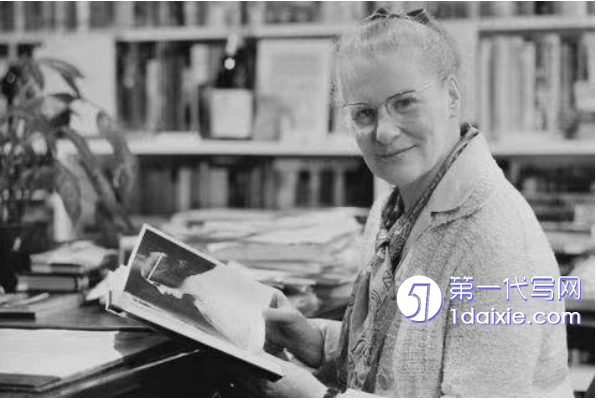本文是一篇英语毕业论文,本文最终得出结论,自我与他者的二元对立被打破。通过写回,里斯颠覆了殖民秩序背后的二元对立,瓦解了话语权和殖民权威。
CHAPTERⅠINTRODUCTION
1.1.Jean Rhys and Wide Sargasso Sea

Jean Rhys is magnificent stardom in the literary field.Her exquisitely craftedfictions,such as Left Bank(1927),After Leaving Mr.Mackenzie(1931),Voyage in theDark(1934),and Good Morning,Midnight(1939),draw high praise from readers andcritics.Her most well-known work Wide Sargasso Sea(1966)won an award from theRoyal Society of Literature and the W.H.Smith Literary Award.In 1978,Jean Rhyswas awarded Commander of the British Empire for her enormous contribution toliterature.
Her works explore the unknown stories of marginalized outsiders who live inanother culture.As a Creole woman,she challenges the authority of colonial discoursewhich is taken for granted.And her writing techniques are influenced by modernism.The employment of stream of consciousness and multiple narrative voices isconnected to the French works she has read.Her literary success is also in relation toher own life experience.Her complicated racial identity as a white Creole andintricate emotional experience provide raw materials for her fictions.
Jean Rhys was born on August 24,1890,in Dominica.She was christened EllaGwendoline Rees Williams.“Gwendoline”is used on her tombstone and in herunfinished autobiography.While she dislikes the name since it means“white”inWelsh.She was a daughter of an elite family.Her father,William Rees Williams,wasWelsh.He was appointed as a doctor in Roseau,Dominica’s capital.Rhys barelyknew her father due to the scant time they spent together.It was from her aunt Claricethat she pieced together her father’s story.In her obscure memory,she rememberedher father’s habit of talking about English politicians at dinners.It can be inferred thather longing for Britain partly came from her father.
1.2.Literature Review
It was not until 1966 when her Wide Sargasso Sea was published did Rhys earnacclaim.She was ignored and marginalized by Anglo-Saxon readers and writers forquite a long period since the readers were not prepared for the brutal truth of sex andmoney.Her meteoric rise to fame was explainable considering that feminism andpost-colonialism were in the ascendancy in the 1960s.As Jean Rhys’s mostrepresentative work,Wide Sargasso Sea was universally welcomed and arose heateddiscussions among the scholars at home and abroad.It has been approached throughdifferent lens.
1.2.1.Studies Abroad
Foreign scholars conduct earlier and maturer researches on Rhys than domesticones.Since the end of the 1960s,a large number of academic achievements haveemerged in the study of Rhys’s works and formed the booming“Rhys industry”at theend of the 20th century.Journal of Caribbean Literature launched a Jane Rhysresearch in 2003.After the first international seminar on Rhys was held in Dominicain 2004,and the“Reading Jane Rhys”International Conference was held in Londonwhere Rhys researchers gathered together in 2010.In 2013,Caribbean Studiespublished a collection of Rhys research essays,in which research results of more than20 years of Rhys were included.Jean Rhys:Twenty-First-Century Approaches cameout in 2015 by the University of Edinburgh Press.It demonstrates the contributionsRhys has made in terms of modernist aesthetics,psychoanalysis,postcolonial studies,and so on.
CHAPTERⅡTHEORETICAL FRAMWORK
2.1.Feminist Theories on the“Other”
A wide range of referents is considered to be the Other.With regard to gender,female is the Other compared with male.Ethnically speaking,people of color such asblacks and yellow races are the Others.East and Africa are geographical Others.Interms of economics,underdeveloped countries and regions are the Others.Regardingculture,heterogeneous and non-Western cultures are the Others.Madness is the Otherof civilization.
The Other is not only related to personal identity in psychoanalysis,but also inrelation to collective identity in terms of sociology,anthropology,and cultural studies.The Other differs from the self in consciousness and cognition,standing as an outsiderof self’s culture.The binary provides a way through which one can understand whomhe is by distinguishing from what he is not.Kristeva attests that when a person rejectsa certain group by defining it as the Other,what he wants to reject is not others but apart of himself he cannot understand and accept(Zhang Jian 124).The self deals withthe things beyond his comprehension by naming them the Other.Unknowabilitymakes the Other possess a sense of mystery.At the same time,the self is threatenedand generates an urge to control the Other.The entire Western philosophical traditionis a process of continuously digesting and absorbing Others,constantly incorporatingOthers into self-consciousness.
2.2.Postcolonial Theories on the“Other”
Post-colonial criticism frequently makes use of silence and marginality toillustrate to criticize the hegemony of the West.Orientalism deems that the Eastrepresents silence,sensuality,femininity,tyrannical,and dictatorship,on the contrary,the West means civilized,democratic,rational,and moral.
Said mentions in his Orientalism that Orientalism is an artificially craftedconception by the West rather than a natural existence.It is a body of fabricated truthand is irrelevant to the actual East.Orientalism is a knowledge system establishedthrough academic research.One difference between West and East is that the former writes the latter while the latter is written by the former.West has the power ofobservation and research.East is a silent existence,unable to express itself and canonly be represented by Westerns.Orientalism was built on the basis of duality andprojects the privileged position of the West.A set of binary oppositions emerge fromOrientalism:colonizer and colonized,powerful and powerless,center andmarginalized,civil and barbarian,and so on.
CHAPTERⅢROCHESTER’S LOSS OF SELF-IDENTITY AS THE OTHER.......24
3.1.Loss of Male Authority in Patriarchal Society................................24
3.2.Loss of Colonial Authority in Post-colonial India......................30
CHAPTERⅣOTHERIZED ANTOINETTE’S CONSTUCTION OFSELF-IDENTITY......................................40
4.1 Awakening of Complex Identity as White Creole Woman..............................40
4.2.Madness and Violence as Vehicles to Construct Self-identity.......................46
CHAPTERⅤCONCLUSION..................................54
CHAPTERⅣOTHERIZED ANTOINETTE’S CONSTUCTIONOF SELF-IDENTITY
4.1 Awakening of Complex Identity as White Creole Woman
It is not until the moment she dies that Antoinette shakes off her identity as theOther and is reborn as a self.As a white Creole,she is accepted by neither whitepeople nor the former slaves.She is a marginalized outsider in both Dominica andEngland.In her marriage,she is double oppressed,but she manages to construct acomplex identity as a white Creole woman at last without yielding to any society thatrepresses her.Her fearless fight is worth analyzing so as to inspire other depressedpeople.Before probing into the process of her awakening as a self,it is necessary topresent how she becomes the Other.
As a descendant of a former slave-owner,Antoinette is excluded from bothblacks and whites.Though as a result of the Emancipation Act,slaves are liberatedfrom slavery,trauma caused by history is unforgivable and irreparable.There is aninsurmountable gap lies between white Creole and colored people.“White Creolepeople are nothing but white nigger now,and black nigger better than white nigger”(Rhys 22).Antoinette’s family is hatred and despised by ex-slaves.They ridiculeAntoinette’s family for their declining social and economical status.After sneering atthe shabby clothes of her mother,they poison her mother’s horse.The former slaves molest the former ruling class.On the other hand,gentlemen with high morality inEngland assume they are disgraced by their cruel and inferior peers in the colony.Proud is replaced by despising,and“all belonged to the past”(Rhys 15).Thepromised compensation by the English never come true.Bankrupted Creole peopleare too desperate to continue their lives.The diploma of Antoinette as double Other isself-evident after the enacting of the Emancipation Act.

CHAPTERⅤCONCLUSION
Wide Sargasso Sea does not only uncover the gripping story of the madwomanbut also provides a middle space where both sides of the story are revealed.It can beseen from the story that both Rochester and Antoinette exist as the Other.This thesismakes an inquiry into the selfness and the Otherness of the main literary characters inWide Sargasso Sea from the perspective of post-colonialism and feminism.
The Other theory is developed by post-colonialists and feminists to oppose thedisadvantaged position of marginalized people.Self and Other,men and women,Westand East,colonizer and colonized,these binary oppositions constitute male colonialdiscourse.Under the trend of deconstruction,male discourse based on binaryopposition is challenged.There is no absolute truth held by a white middle-class male.Boundaries are broken down.There is an opportunity for those marginalized Other togain their identity and become the center of the society.
In Wide Sargasso Sea,it can be seen that self and Other are not in a fixedrelationship.Rochester is supposed to be an authorized West self,while he is reducedto the Other in England and the colony.Antoinette,as a Creole woman,is no longerdouble oppressed as the Other,she instead builds her identity.The main part of thethesis makes a thorough inquiry into the transition Antoinette and Rochesterexperienced.
reference(omitted)
